How do you ensure a forest stays in the ground? This is the central question of durability–also known as permanence–a key dimension of carbon credit quality. Durability is an essential component of a carbon credit because corporates need to ensure that the carbon they are claiming is being sequestered for the long-term. However, forest carbon projects are not often perceived as being durable. When people think about forest carbon, they think about trees. But to get at the real driver of durability, we need to think about the people behind the trees.
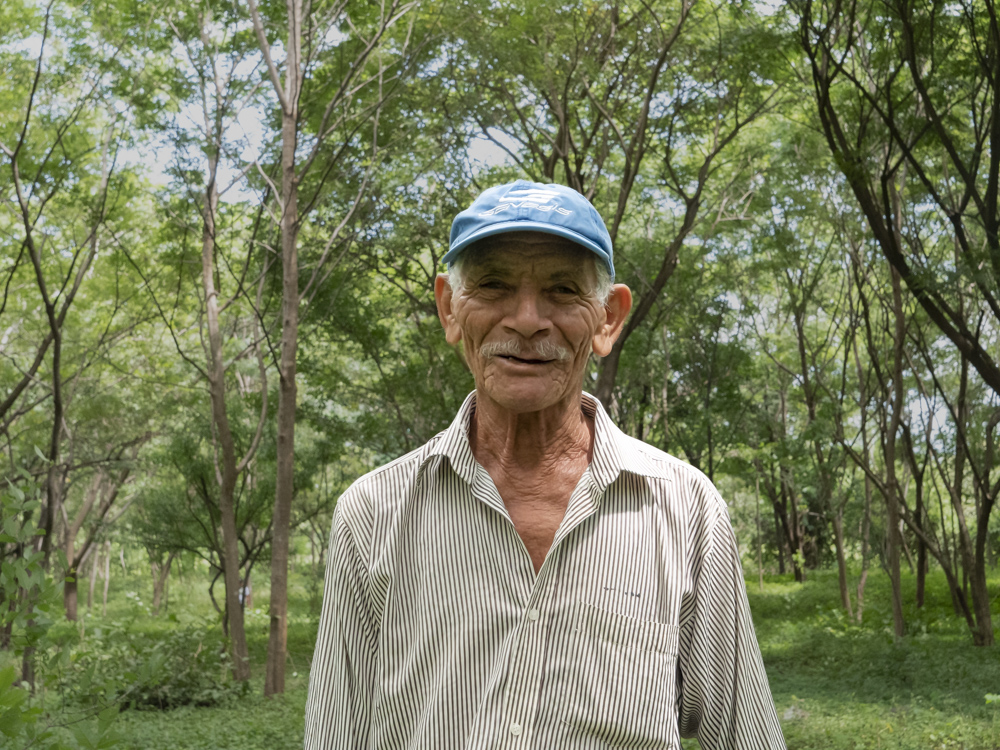
What is durability?
First things first, what is durability? Carbon Direct defines durability as “the planned duration of carbon storage or the risk of reversal before that time is up”. In other words, once carbon has been removed from the atmosphere, durability means ensuring it stays removed. This is also referred to as permanence. Though, when working with forests, durability is the preferred term due to the fact that no tree ever ‘permanently’ stays in the ground.
How do you ensure a forest stays in the ground?
To return to the question of how you ensure a forest stays in the ground, you need to first ask why a forest might not stay in the ground. Natural threats aside (e.g., forest fires, extreme weather), the overarching motivation for deforestation is that people managing forested land see better economic opportunities for land use than to maintain a forest. This is also true for people who are choosing whether or not to grow trees on non-forested areas of land. If people can’t improve their livelihoods with forests, they will inevitably choose not to do so. In Taking Root’s 15 years of experience, we’ve found this to be especially true for smallholder farmers. If smallholder farmers are weighing what land-use decisions will allow them to make it through the year, they will prioritize options that deliver immediate economic returns.
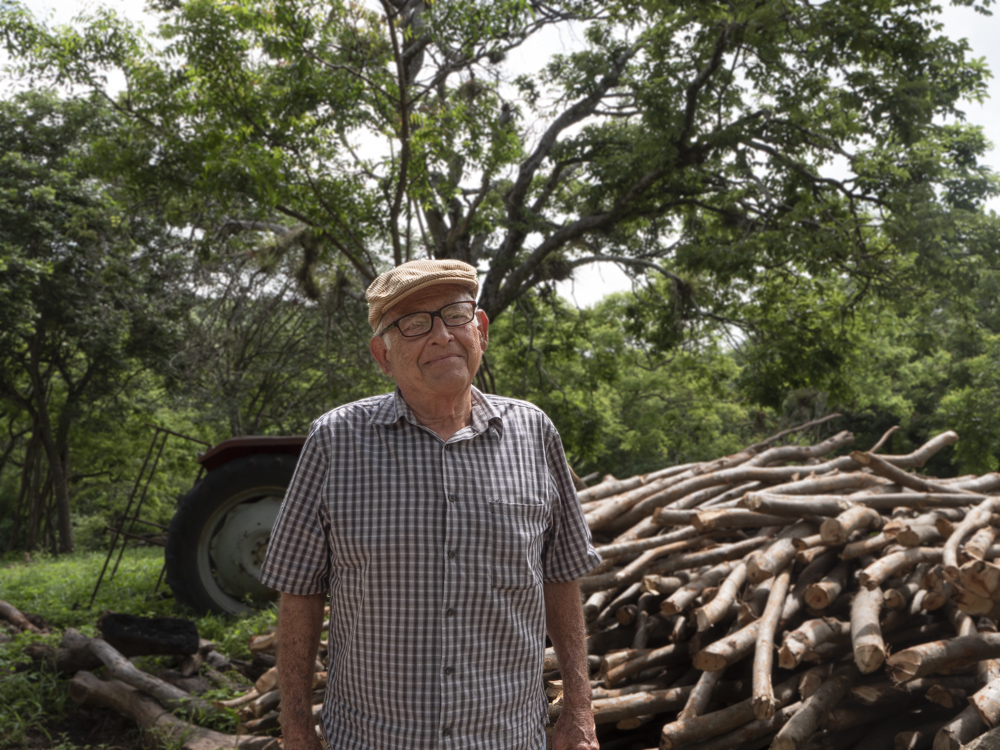
Too often, reforestation projects fail due to a focus on short-term planting outcomes rather than on long-term growth. How a project frames its goals is important because it effects what is needed to achieve them. For example, setting long-term goals requires a project to think about how and why farmers will maintain trees after planting. To create durable carbon credits from ARR activities (Afforestation, Reforestation, Revegetation), focusing on short-term planting outcomes is inherently impossible because carbon sequestration requires trees to mature in order to take place. This means that projects need to create more incentives for farmers to benefit from growing trees, not just planting. Doing so decreases the risk of forest abandonment and translates directly to higher credit durability.
How Taking Root creates opportunities to improve livelihoods
Taking Root’s CEO Kahlil Baker recently spoke at the 5th World Congress on Agroforestry highlighting the need to think about livelihoods at every step of a smallholder reforestation program. This means consulting farmers on what their objectives are, how trees can help those objectives, and deliver value to them in the short, medium, and long-term. By diversifying ways for farmers to obtain value from growing trees, reforestation becomes much more desirable for farmers to carry on through the program. To illustrate this approach, below are some of the ways that farmers improve their livelihoods by growing trees in the CommuniTree program.
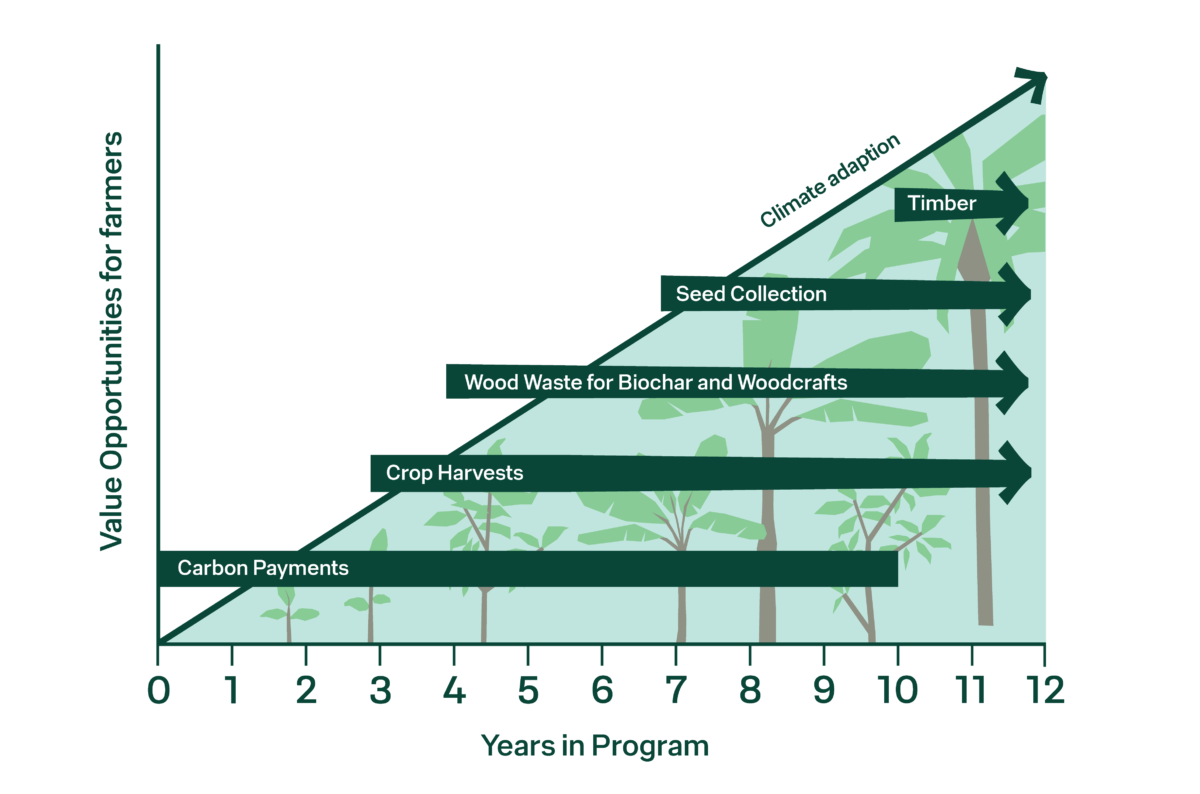
Short-term: Reasons to join a reforestation program
From the very beginning, farmers need to see the value in growing trees. This gives them a reason to join the reforestation program, as well as the incentives to get through the initial planting phases. When a farmer joins CommuniTree, emphasis is placed on understanding their objectives. For example, by understanding that cattle farmers need space for their cattle to roam, offering a lower density planting design inherently provides more value than one of high density. When farmers choose how they will reforest their land, they are able to do so in a way that complements their livelihoods.
After trees have been planted, they do not initially create value for farmers due to the amount of time it takes for them to grow. This creates a short-term gap. However, the explosion of carbon credits offers a solution. Farmers can engage in carbon sequestration activities (ie. growing trees) to help corporates achieve their climate goals, while corporates can pay farmers for their work. CommuniTree produces carbon credits certified by Plan Vivo, which requires that farmers get Payments for Ecosystem Services (PES). This entails 60% of revenue from the sale of carbon credits be delivered to farmers as cash or material payments, creating an effective tool that enables farmers to unlock other forms of value further down the line.
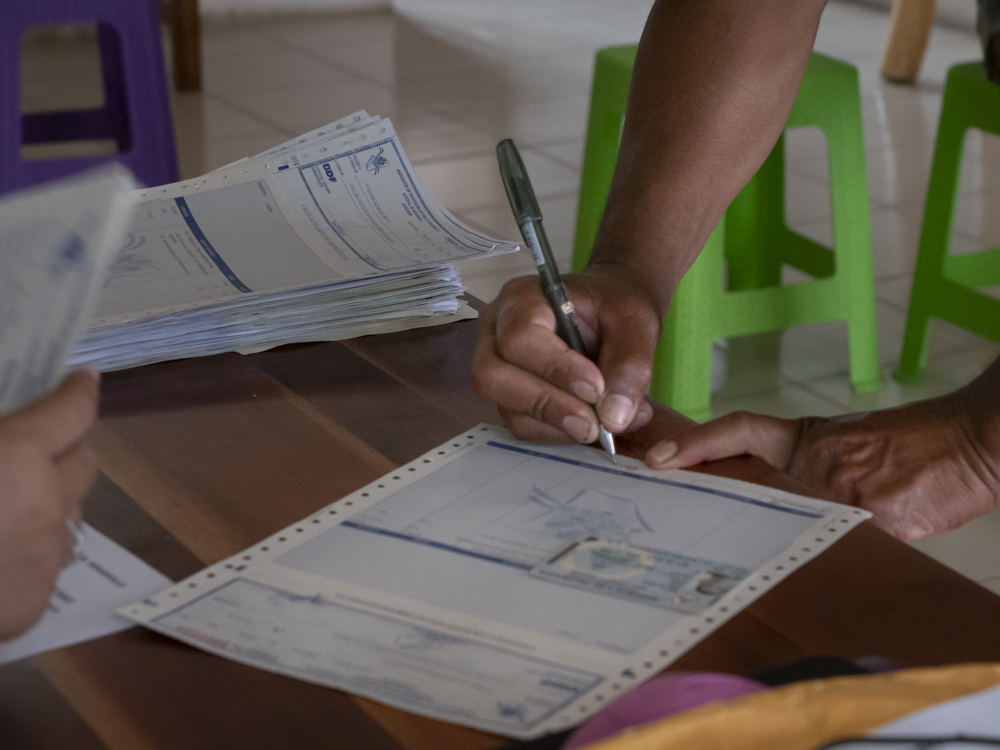
Medium-term: Shifting from planting trees to growing trees
As trees begin to grow, integrating ways to reap benefits in the medium-term is crucial as this gives farmers reasons to actually grow the trees. Innovating to find accumulating forms of value for farmers has been a major reason for CommuniTree’s success. It has caused farmers to become increasingly excited about the program and what growing trees can offer. What’s more is that these forms of value have been created by APRODEIN finding ways to take by-products of reforestation activities, purchase them from farmers, and reuse them in the reforestation program. Here are 3 ways that farmers can obtain value in the medium-term from their forests:
- Wood ‘waste’: As trees get larger, competition for light and nutrients increases. In order for carbon-storing trees to get sufficiently large, forests need to be pruned and thinned to reduce that competition. Rather than waste those prunings and thinnings, APRODEIN purchases this wood from farmers and provides an additional revenue source beyond carbon payments. They then transform the wood into a variety of products, including biochar, which is later used as natural fertilizer for future planting activities.
- Seed collection: Buying seeds that farmers collect on their land is more than just another revenue stream for farmers. It also secures seed supply for future planting activities! In 2022 alone, APRODEIN purchased 35 million seeds to achieve the year’s planting targets, which makes buying from farmers beneficial for both parties.
- Crop Harvests: When coffee is grown under shade trees, flavours ripen more slowly, intensifying flavours and allowing farmers to sell their crop yields at a premium. Additionally, fruit trees can be used for that shade, adding yet another crop to yield additional revenues. These benefits are sustained into the long-term, making it a great opportunity for farmers to continuously improve their livelihoods.
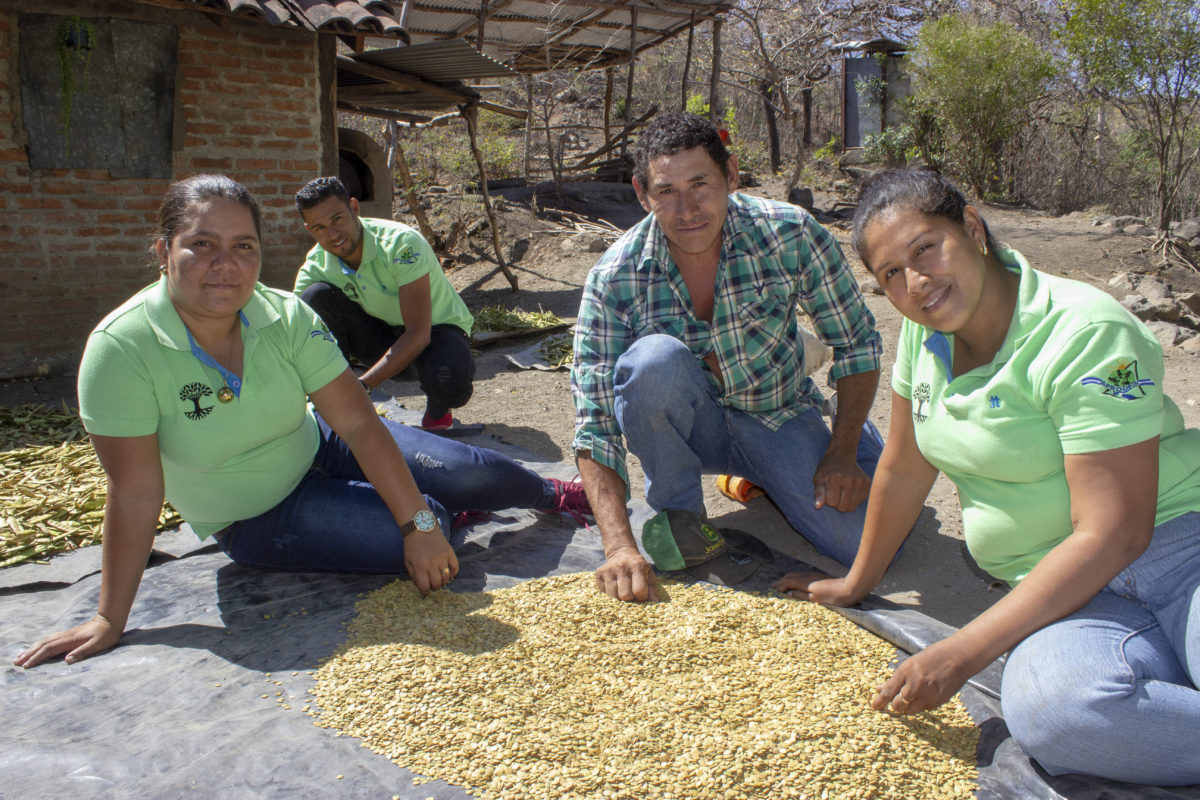
Long-term: Keeping a forest in the ground
Once forests have matured, long-term incentives provide farmers with even more reasons to keep their forests in the ground. Typically, many medium-term benefits extend into the long-term, but building additional long-term benefits into a program ensures that forest carbon stays sequestered while farmers can continue to improve their livelihoods.
There are two major ways in which CommuniTree provides long-term value for farmers. The first is through sustainable timber harvesting. Once mature, certain trees can be selectively harvested, providing farmers with high-value timber that can be sold at a premium on the market. By sustainably harvesting this timber, the carbon stock remains stable while the forest stays intact.
The second way is through climate adaptation. CommuniTree integrates climate education into technician field visits, but farmers frequently report on their own observations. As trees generate canopy cover, farmers often speak fondly about the shade that’s provided for their animals and the improved irrigation on their land. Climate change is increasing temperatures and frequency of extreme weather, making forests become an increasingly valuable way for farmers to safeguard their livelihood.
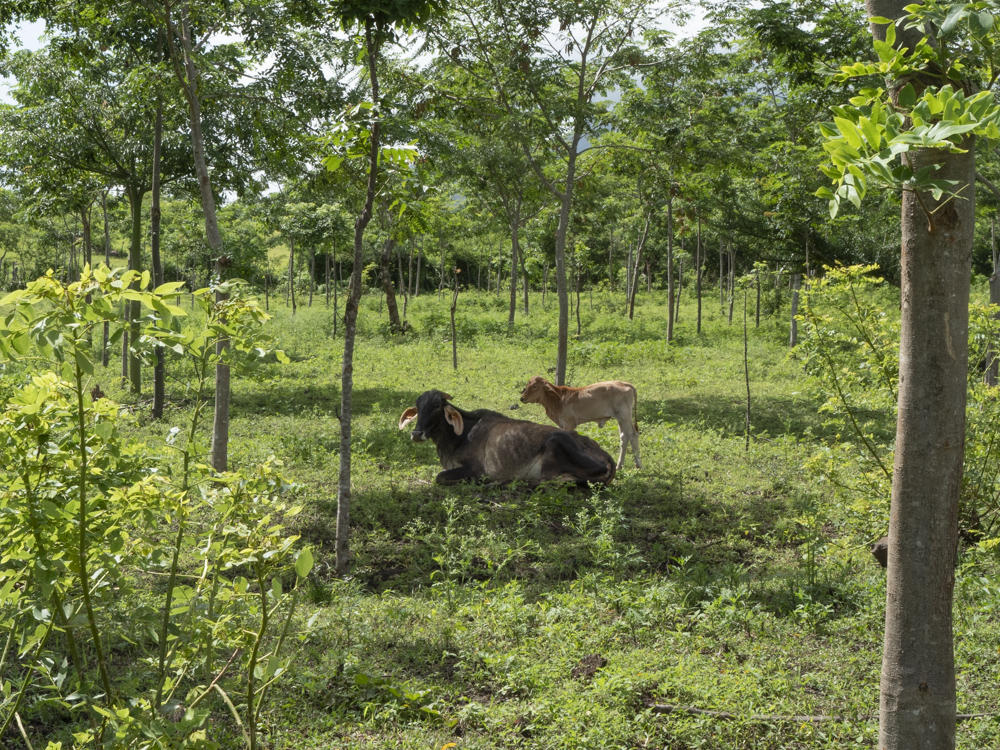
How forest carbon forces us to think about livelihoods
To create durability in the context of forest carbon, we need to think beyond carbon. We need to think about those actually growing trees and how to make it easier for them. To do this isn’t simple. Building new forest-based markets and connecting farmers to those markets takes a lot of time and investment. While it is for project developers to do this work, corporates have a role to play as well. First, by asking the question and scrutinizing how projects put livelihoods at the heart of their projects. Second, by driving higher carbon credit prices in order to increase farmer incentives and enable project developers to invest in building forest-based value chains.
If we want to accelerate the restoration of the world’s forests, we need to ensure that people can improve their livelihoods by growing trees. Taking Root does this in a number of ways but is always trying to come up with new innovations to take it further. The more opportunities we create for farmers to benefit from growing forests, the more likely the forest is to stay in the ground.